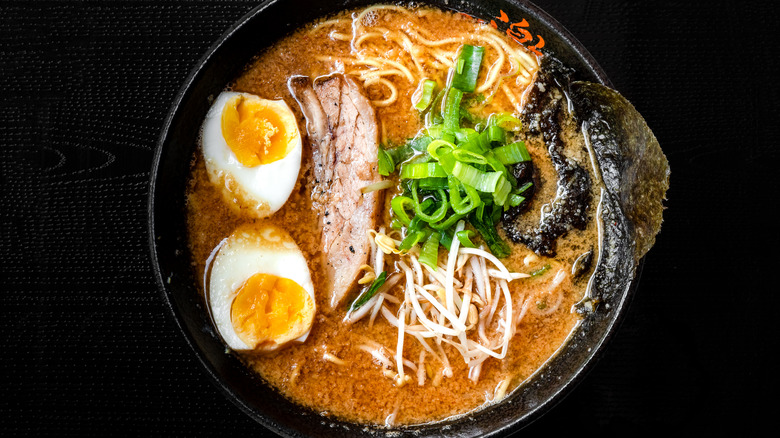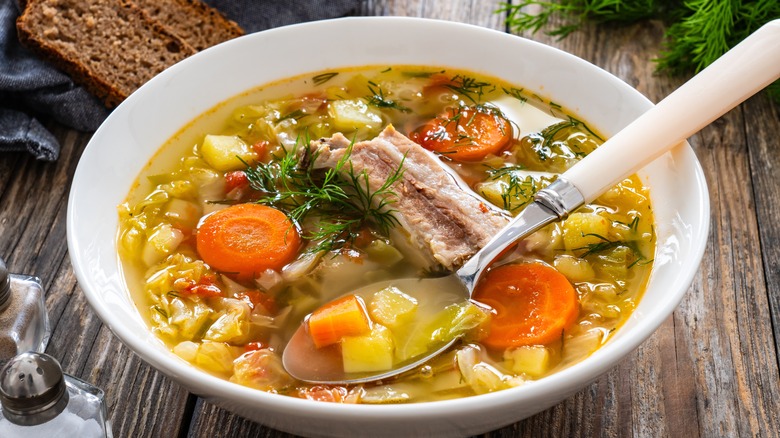Why Pork Skin Is The Secret To Really Great Soup
We all know that a good stock is the key to a great soup. Simmered for hours with aromatics and spices, stock is the building block for soups around the globe, from Vietnamese Pho (like Charles Phan's recipe) to Mexican caldo. And while bone broth has had its time in the limelight, it might not yield the most flavorful result. To get a stellar all-purpose stock to have on hand, you need to add body and fat. That's why, aside from the bones, you should use pork skin when making your next batch of stock. Think of the best ramen you've ever had, and it's quite possible that the broth included a good amount of pork skin.
A rich pork stock is key to making a fabulous Tonkotsu ramen recipe, and adding skin when making the broth will make it even more flavorful. This style of broth is known as Chinese pork stock — sometimes called white stock or milk stock for it's opaque, milky appearance. This is the preferred broth for making soup dumplings, for instance.
Using pork neck bones as well as trotters (pig's feet) and hocks (also known as knuckles, which are the shank end of the leg bone) is ideal since they are always cheap and have a good amount of thick skin attached. This, alongside bones and cartilage, will yield the collagen-rich stocks and broths with a thick, gelatinous consistency and pleasant mouthfeel that make a hearty soup or stew, which is also wonderful as a sipping stock.
You can add pork skin to all of your stocks
It's not only just okay — it's actually a good idea to add a bit of pork skin to all of your stocks, including beef and chicken. Depending on the flavor you want, you can add more or less pork skin, but even a small portion will enrich your stock and add body and flavor to your soups. Pork and chicken stock, for instance, is widely used in Chinese cuisine. Making stock with equal parts chicken and pork results in a balanced and mellow broth that will be wonderful in soups, such as this "eggroll in a bowl" noodle soup recipe or this unique sizzling rice soup. And adding a bit of pork skin to the broth when making Mexican caldo de res will make it even more delicious and comforting.
If you don't need the broth to be clear, you can let it bubble away over medium heat for three to four hours, or until the skin and meat fall off the bones, and the liquid concentrates and thickens. Once it has cooled a bit, strain it to remove the meat and bones; if you want to make it clearer, you can filter it through cheesecloth to obtain a finer, yet incredibly flavorful broth.

